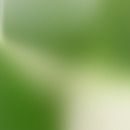Synonym(s)
DefinitionThis section has been translated automatically.
Bitter substances (amara) are chemical (generally naturally occurring) compounds that are used solely because of their bitter taste. The corresponding drugs are called bitter drugs. Bitter substances are perceived via bitter substance receptors.
Bitter substances do not have a uniform chemical structure. They are classified as "bitter substances" solely on the basis of their bitter value.
Natural bitter substances are found in numerous plants. This property is partly expressed by their names: bittersweet stem, bitter orange syrup, bitter almond oil, bitter clover, bitter thistle and others.
Bitter substances are also found in: angelica, hops, olive leaf, myrrh, ratanhia, yarrow, centaury, willow (Salix species), wormwood.
Bitter drugs such as gentian, wormwood and centaury are used as medicinal plants because of their bitter substances.
Pharmacodynamics (Effect)This section has been translated automatically.
Bitter substances cause an increase in gastrointestinal secretions and have an appetizing effect. Furthermore, bitter substances are said to have spasmolytic, anti-inflammatory, antifungal and antibacterial effects.
Aromatic bitter substances (Amara aromatica) are found in various spices such as basil, rosemary, aniseed, fennel, caraway, dill and coriander. They are found in various spices such as basil, rosemary, aniseed, fennel, caraway, dill and coriander. They are characterized by their essential oil content.
Field of application/useThis section has been translated automatically.
Most bitter substances (listed here as examples) are found in the terpene group (sesquiterterpenes, di- and triterpenes).
- Limonin (triterpene) in citrus species
- Quassin (tripterpene) in Quassia amata the tropical bitterwood
- Artabsin (sesqiterterpene) in Artemisia species
Not belonging to the terpene group are:
- Quinine (alkaloid) obtained from cinarides
- Naringin (flavonoid) in grapefruits
- Neohesperidin (flavonone glycoside) in citrus species
In scientific medicine, the use of bitter substances is recommended to stimulate the appetite, e.g. for achylia or anorexia as well as for sicca symptoms. The bitter substance in Quassia amara is used externally for seborrhoeic eczema and rosacea.
LiteratureThis section has been translated automatically.
- Diehl C et al (2013) Efficacy of topical 4% Quassia amara gel in facial seborrheic dermatitis:a randomized, double-blind, comparative study. J Drugs Dermatol 12:312-315.
- Ferrari A et al(2011) Evaluation of the efficacy and tolerance of a topical gel with 4% quassia extract in the treatment of rosacea. J Clin Pharmacol 52:84-88.
- Peters HP et al (2016) The effect of two weeks ingestion of a bitter tastant mixture on energy intake in overweight females. Appetite 107:268-273.



